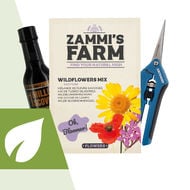
How To Prune Hot Pepper Plants For Maximum Yield
Getting the most out of our pepper plants is all we want as growers. Large yields of flavourful and spicy fruits are your reward for taking the time to provide your plant with regular maintenance. But did you know that pruning can play a huge role in the amount of peppers produced? This guide takes you through all you need to know.
There are numerous ways to get the best out of your hot pepper plants, one of which is pruning. It may sound like a simple idea, and you're right to think so, but the difference between a pepper plant that's been pruned compared to one that hasn't is night and day. Here we detail everything you need to know about pruning so your chili plants can flourish and deliver sizeable and healthy yields. Regardless of your growing expertise, we've got you covered.
Does pruning hot pepper plants increase yield?
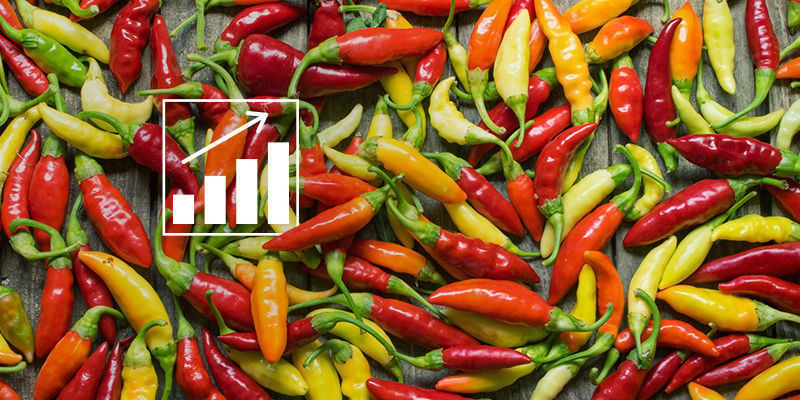
So, first things first—does pruning actually have a positive impact on the productivity of your plants, or are we just creating unnecessary work for you? While it's true that pepper plants don't need to be pruned to produce fruits, you'll only be doing yourself a disservice by not intervening. Pruning doesn't just make your plants look tidier; the scaling back of foliage and branches also has some beneficial effects on the production and overall quality of your plants and the fruit they bear.
The reduced amount of foliage provides much better air circulation for the plant, and even has the potential to stop the spread of fungal disease amongst the leaves and fruits. The increased space also enables growers to spot pests and insects much more efficiently, allowing for swift action if needed.
On top of alleviating pest and disease issues, creating a more streamlined plant facilitates even growth and greater exposure to sunlight and warmth. Furthermore, pruning can be used to prevent plants from leaning, falling over, or their branches snapping.
These are just a few examples of the benefits of pruning pepper plants, but as you can see, it's likely in your best interest to shape your plant as it grows.
Growshop
From flowers and herbs to vegetables and fruits, get your hands on some of the finest seeds and products courtesy of our Plantshop.
When should you prune pepper plants?
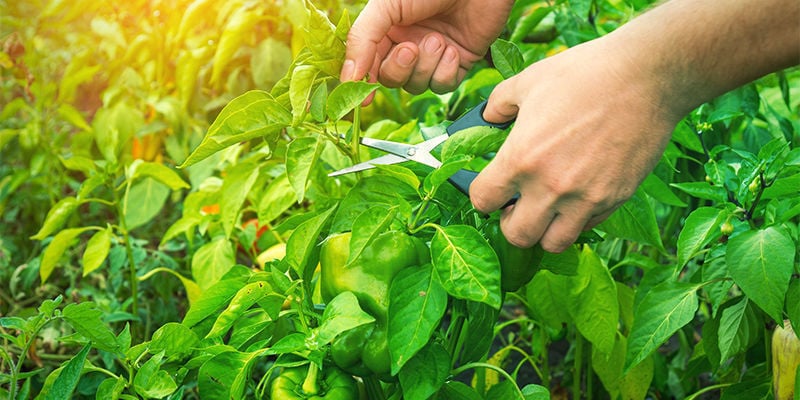
While your plants need regular maintenance and upkeep, you do not need to constantly or excessively prune them. In fact, there are only a few prime pruning opportunities you need to take advantage of for your plants to flourish. These periods can be divided into early, mid, and late stages, and we'll get into exactly what each stage entails a little later on.
The principle behind pruning pepper plants is to first allow the specimen to develop a bit so you can see how it's progressing. You don't want to start cutting away before it begins to take shape; this will only cause stress and an underperforming plant. So exercise moderation and err on the side of caution when pruning, and be patient and attentive throughout the growing cycle.
Pruning vs topping pepper plants
As you can probably imagine, there are many schools of thought regarding pruning. Some even look to adopt specific intervention methods, such as topping—but is it as effective? Those well-versed in cannabis cultivation will know all about the process of topping, and the technique is very much the same for pepper plants. Topping is the removal of the main growing tip of a plant, which causes the production of two main stems as a result.
In many ways, topping and pruning are quite similar; you’re removing parts of the plant to stimulate growth in the places that matter. However, different growers have different opinions on the effectiveness of topping vs general pruning, so it all comes down to (careful) experimentation to see what works for you. Indeed, topping is essentially just a specific type of pruning, and you can technically combine the two techniques.
How to prune hot pepper plants
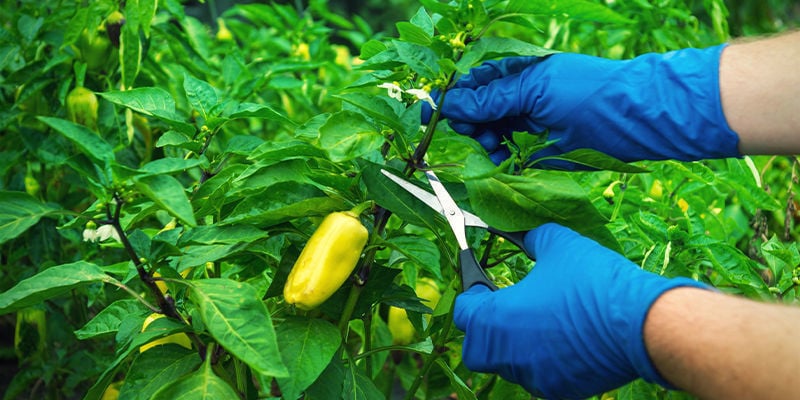
Now that we've covered the principles and potential benefits of pruning pepper plants, we'll detail exactly how to do it yourself. Fortunately, it's a generally easy process that doesn't require much in the way of equipment or expertise.
Equipment
There's very little equipment required for the pruning task itself. Essentially, all that's needed are some pruning shears. These will be your main tool for the task. Of course, they come in all shapes and sizes, so be sure to pick one out that will suit your needs.
Your pruning shears should be kept clean at all times to avoid any cross-contamination with other plants. Alcohol wipes are extremely useful when it comes to keeping your tools clean. You can also keep contamination to a minimum by wearing gloves while pruning.
But with just those few pieces of equipment, you're ready to go.
Instructions
With pruning scissors in hand, you can begin cutting away at your plant. But where do you start, and which parts should you be cutting? As mentioned, there are three distinctive times you should concentrate on. Acting at these moments will allow your plants to thrive, without putting them (or their fruits) at risk.
Early season pruning
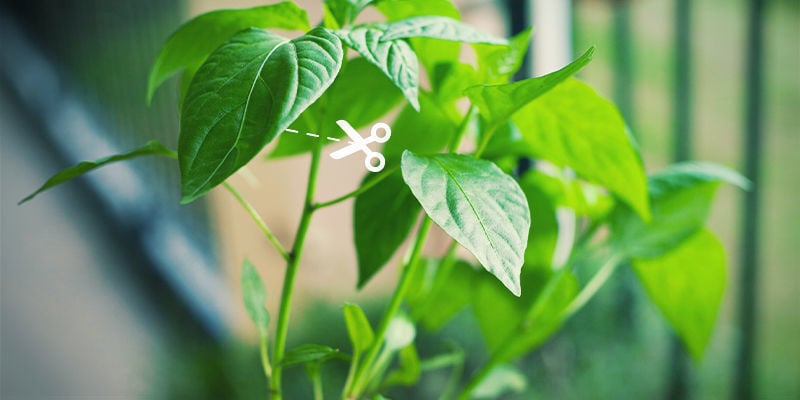
For this earliest stage, pruning can be carried out when the plant has reached around 25–30cm in height. It is around this time that the young plant will have produced a distinctive Y-shape and sprouted some growing points, flowers, and side shoots. At this point, you can now cut off the top shoots below the topmost node.
This will not only give your pepper plant a more streamlined appearance, but it will reinforce and promote branching, and make it ready to be transplanted into a bigger container. As most pepper plants are extremely delicate at this stage, they should be treated with care.
From here, you can also pinch off early flowers so the plant continues to put energy into ramification and shoot production. Later on is when you want to focus on the flowers.
Mid-season pruning / pinching
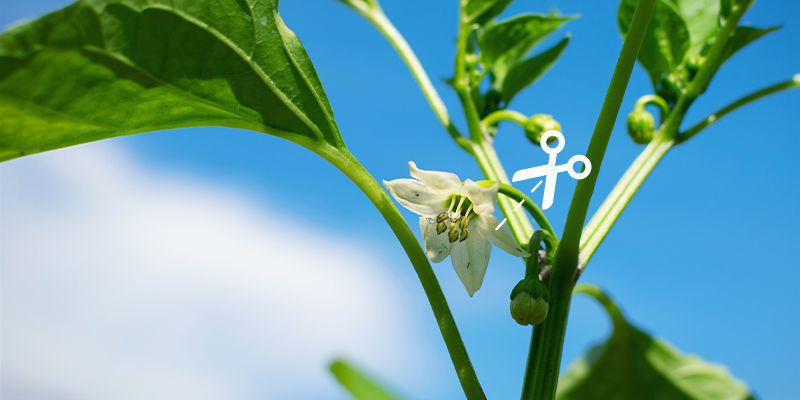
Compared to the previous prune, acting at this stage is a little less exact, and will differ depending on the variety of chili or pepper plant you're growing. But essentially, when the plant has begun to produce flowers and the first few fruits, it's time to pinch.
This is more general upkeep to ensure all of the plant's growing energy is focused on the right areas to promote maximum yield. Any offshoots or sites with excessive foliage will need to be trimmed. Pay particular attention to the lower parts of the plant, as the leaves closest to the ground can attract insects, pests, and other soil-dwelling threats such as fungal disease.
A simple pruning at this stage will remove unwanted parts of the plant, limit the risk of diseases, and improve airflow, giving your plant everything it needs to flourish.
Late-season pruning
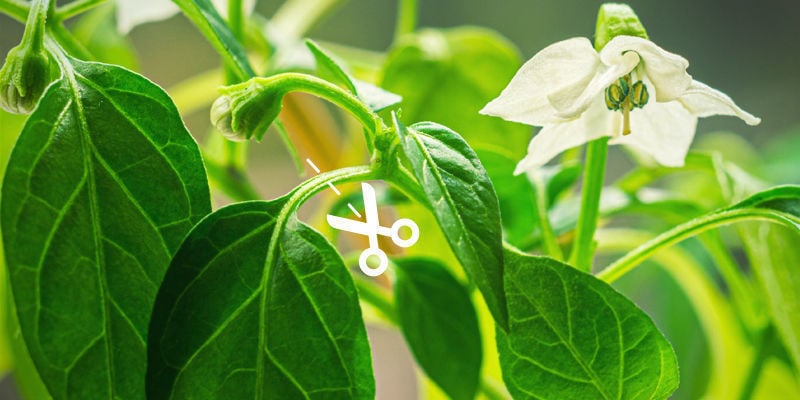
Now we're getting into the late stages of growth. Your pepper plant will have reached its optimal height by this point, but that's not to say pruning isn't required. Essentially what you're looking to do is ensure your plant is receiving the most light it can, allowing the fruits to reach their ideal colour and size.
This can be achieved by cutting away unwanted leaves that might be blocking the sunlight. Take your pruning shears and trim the foliage away from the fruits. Although the plant is fully formed, be careful not to slice into the peppers or the stem.
As you can probably see, there's no exact science or definitive way to prune pepper plants; just be sure to check in with each plant at each stage, and act accordingly. Your plant will tell you everything you need to know.
Tips for pruning hot pepper plants
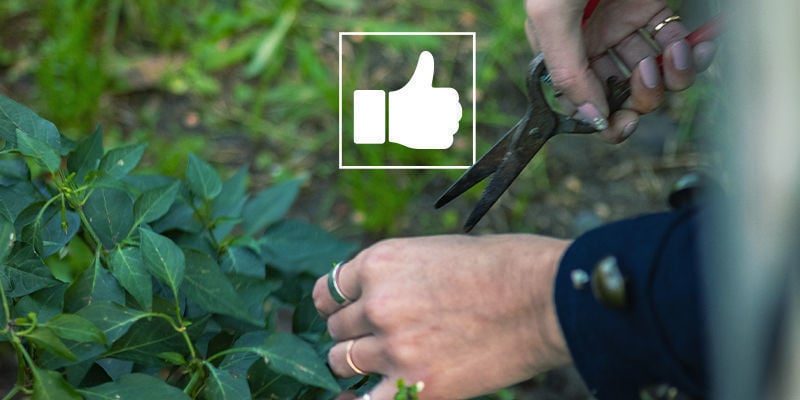
By following the steps above, you should be adequately clued in when it comes to pruning pepper plants. However, the following section features some quick tips to make the pruning process a whole lot smoother.
Get to know your pepper plant
As all varieties of pepper plants vary to some degree, it's essential to learn the differences between pruning individual specimens—such as tall vs short plants. So do your homework and ensure you're giving your plant the best possible care—e.g. not over-pruning or under-pruning, or doing so at the wrong time.
Only prune when plants are dry
You might think you should work pruning into your regular maintenance schedule, such as right after watering, but this is ultimately a bad idea. Make sure your plants are dry before pruning, as pathogens can travel from the droplets of water into freshly cut areas.
Clean your scissors and hands
Cross-contamination is a huge risk when dealing with any plant. Be sure to clean your hands and pruning shears between handling your pepper plants to avoid any issues further down the line.
Pruning hot peppers for maximum yield
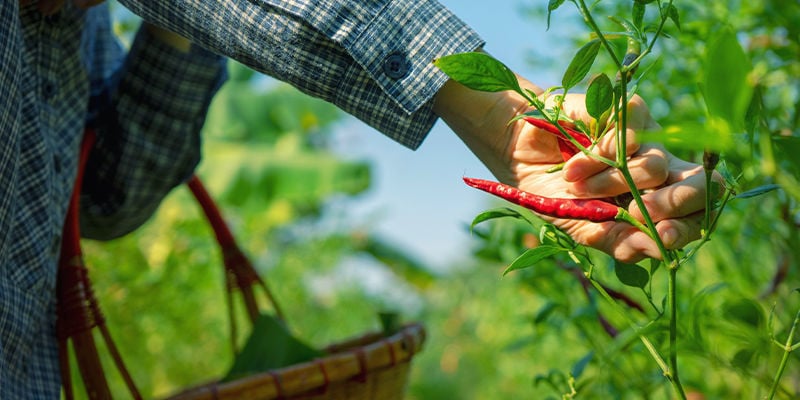
There's no denying that pruning leaves and cutting away unnecessary plant material will serve to maximise your pepper plant's potential. But what do you do once you've harvested all of your fruits? You should probably just throw the remaining plant away, right? Wrong!
Did you know that pepper plants can be kept over winter and awoken in spring, used again for another batch of chilies? All you need to do is remove the remaining leaves from the plant. Yes, it will be a stark contrast to those summer days when your plant was blossoming. Once prepared for hibernation, bring the plant indoors and position it in a cool place (not below 10°C) out of direct sunlight (to avoid it growing new shoots)—and it'll be ready for a revival the following year!
-
 3 min
5 May 2022
How To Harden Off Hot Pepper Plants
Learning to harden off your chilli seedlings means they can survive the change from indoors to outdoors. A crucial element of transplanting chilli plants, find out how to do it effectively.
3 min
5 May 2022
How To Harden Off Hot Pepper Plants
Learning to harden off your chilli seedlings means they can survive the change from indoors to outdoors. A crucial element of transplanting chilli plants, find out how to do it effectively.
-
 6 min
12 April 2022
How To Transplant Hot Pepper Plants
Growing chili plants is highly rewarding and, if done right, can produce bountiful harvests of tasty hot peppers. Transplanting is a crucial skill when it comes to chili cultivation, and we're here...
6 min
12 April 2022
How To Transplant Hot Pepper Plants
Growing chili plants is highly rewarding and, if done right, can produce bountiful harvests of tasty hot peppers. Transplanting is a crucial skill when it comes to chili cultivation, and we're here...
-
 6 min
24 March 2022
When And How To Germinate Hot Pepper Seeds
It's no secret that cultivating hot peppers is a hugely rewarding task that not only hones your skills as a grower, but also provides you with a great yield of spicy chillies each time. But where...
6 min
24 March 2022
When And How To Germinate Hot Pepper Seeds
It's no secret that cultivating hot peppers is a hugely rewarding task that not only hones your skills as a grower, but also provides you with a great yield of spicy chillies each time. But where...
-
 8 min
18 March 2022
How To Grow Hot Peppers Outdoors
There's nothing quite like having your own supply of spicy hot peppers. And while it may seem a daunting task to grow them outdoors, we're here to show that it's really not! All you need to do is...
8 min
18 March 2022
How To Grow Hot Peppers Outdoors
There's nothing quite like having your own supply of spicy hot peppers. And while it may seem a daunting task to grow them outdoors, we're here to show that it's really not! All you need to do is...













 United States
United States

